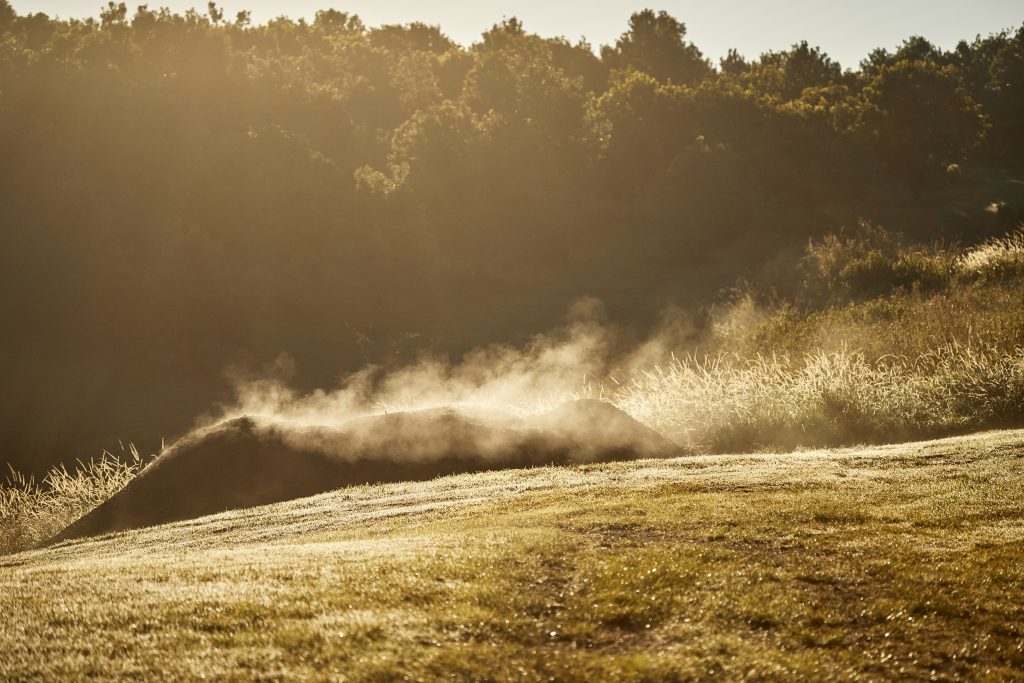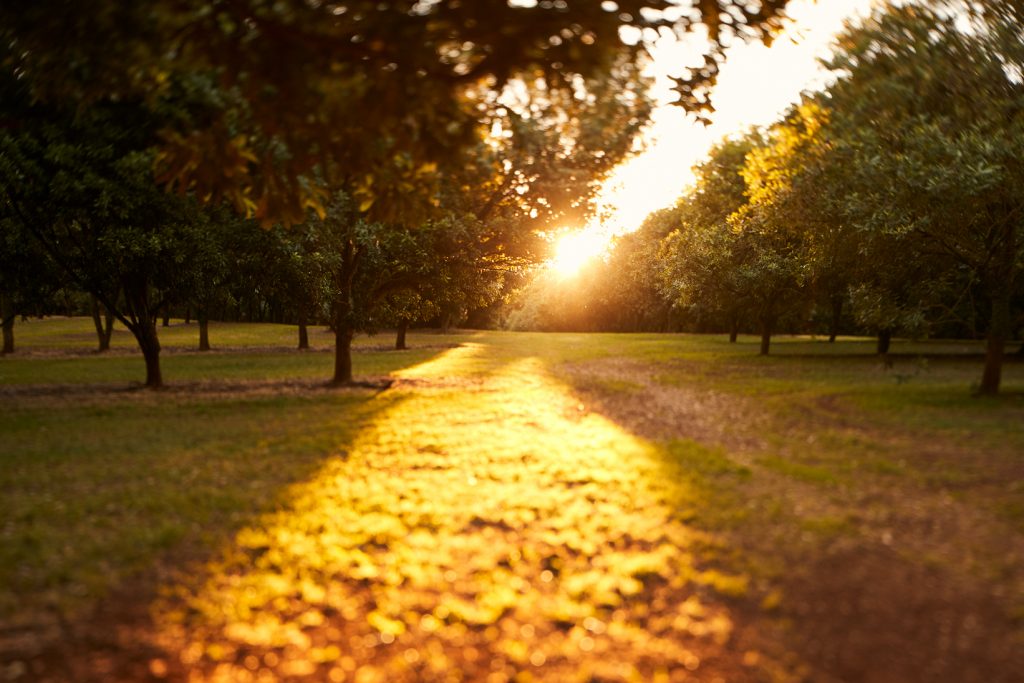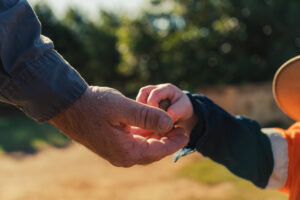Farming for the future
Home » Sustainability » Farming for the future
Did you know that the 14 million+ macadamia trees across Australia help reduce CO2 in the atmosphere 24 hours a day, 365 days a year? The trees in the average Australian macadamia orchard remove more than 17.6 tonnes of carbon per hectare per year from the atmosphere¹! The unique physiology of the trees (including their size, foliage and long life span) mean that each macadamia tree can hold a considerably more carbon than many other crops. They also have unique abilities to manage their own transpiration, making them an extremely water efficient crop that is perfect for a changing climate with longer dry spells.

Naturally sequestering carbon
Our growers know that healthy soil is the key to healthy trees, and only healthy trees produce the highest quality nuts. So many Australian macadamia growers are committed to restoring the soils in their orchards by building up organic matter in the ground under their trees. Not only does this reduce waste by reusing shells, husks and tree prunings, it is also a natural way to sequester carbon in the ground and stop it releasing into the atmosphere.

Keeping carbon emissions down
Australian macadamia growers are also committed to keeping their own carbon emissions down. Wherever they can, our growers work with nature to keep human intervention in orchards as light as possible. Many use regenerative principles and practices in their orchards that conserve soil, promote biodiversity and sequester carbon rather than emit it. Wherever possible our growers minimise their use of heavy machinery which protects soil from compaction as well as limiting emissions from diesel engines. Similarly, our processing facilities are located within growing regions so that the shelling, cracking, drying and packing processes have minimal carbon emissions from transport.
1. Murphy Tim, Graham Jones, Jerry Vanclay, Kevin Glencross; (2013) Agroforest Syst 87:689-698. Preliminary carbon sequestration modelling for the Australian macadamia industry. Agroforestry Systems. 2013;87(3):689-698. doi:10.1007/s10457-012-9589-2







